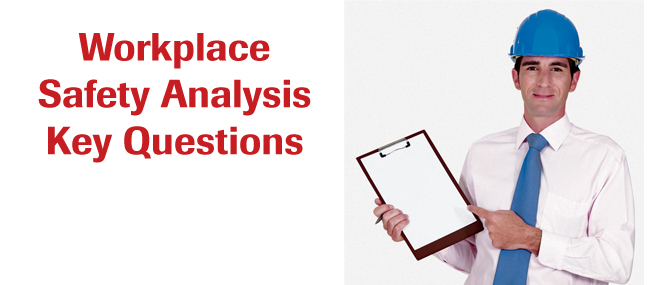Evaluating your current safety culture starts with the right questions. The following is not an exhaustive list. But it is a good place to start when looking at your overall safety culture and common practices. Consider checking with a safety consultant or other expert to conduct a more thorough evaluation.
This list covers some common areas of concern for pallet and lumber companies. These questions will help identify some key areas that may have been overlooked.
1.) Who has the responsibility for developing and monitoring the safety and health program in your facility? Is this material written down and when was the last time it was updated?
2.) Are all the required employee posters and signs displayed in a prominent location where all employees are likely to see it? Are emergency phone numbers posted where they can be readily found?
3.) Are all occupational injury or illness, except minor injuries requiring only basic first aid, being recorded as required on the OSHA 200 log? Who is responsible for your record-keeping practices and is this person up to date on the latest requirements?
4.) What processes are in place to ensure that all new hires go through the appropriate level of safety training as mandated by state and OSHA regulations? Also, are employees trained on safety related to new equipment or duties as they arise?
5.) Are managers and supervisors carrying out their safety and health supervision, training, and enforcement responsibilities? Find out why not if things are being ignored.
6.) Are employees carrying out their safety and health compliance and reporting responsibilities? If the answer is no, see if company policies or unwritten practices discourage reporting in any way.
7.) What are safety meetings like at your company? How often are they held? What content is covered? How are records kept to verify who attends the meetings?
8.) If you hire workers who do not speak English, are important safety materials translated into the appropriate language? Is safety training conducted in the native language of workers?
9.) Is there a system for identifying and evaluating workplace hazards whenever new substances, processes, procedures or equipment are introduced into the workplace, and whenever the employer receives notification of a new or previously unrecognized hazard?
10.) Has your location conducted a noise audit to verify the noise levels and worked to mitigate noise exposure?
11.) What personnel protective equipment do your employees wear and is this enough to meet OSHA guidelines?
12.) What have you done to reduce danger of exposure to either very hot or cold temperatures?
13.) Do you have a safety committee consisting of both labor and managers? What are the duties and requirements for committee members? Are periodic inspections for safety and health scheduled and carried out by managers and supervisors, and the safety committee?
14.) What mechanisms are in place to allow any employee to identify or report workplace hazards?
15.) Are unsafe and unhealthful conditions and work practices corrected immediately, with the most hazardous exposures corrected first?
16.) Is there an accountability system for ensuring managers and supervisors carry out their safety and health supervision, training and enforcement responsibilities? How are managers rewarded or penalized for these responsibilities?
17.) When was the last time a full safety audit was conducted by a qualified person at your location? Are inspection records kept which identify unsafe conditions and practices?
18.) What is your process if a lost time incident occurs at your location? Are all required records kept?
19.) Does your reward system encourage or discourage reporting of hazards?
20.) Who is responsible for first aid at your location? Have these employees kept their certifications up-to-date?
21.) Are flammable materials or hazardous chemicals stored properly? Do you have all required Safety Data Sheets on file and hazard communication posted?
22.) What type of regular emergency and fire safety drills do you conduct? How frequently are these done?
23.) Are all machines properly guarded to manufacture specifications?
24.) Do employees follow lockout and tagout procedures when working on machines?
25.) Have fall hazards been identified and proper railings and protections been installed to reduce worker injury risk?
26.) Is there an accountability system for ensuring employees comply with safety and health rules and hazard/injury reporting responsibilities?
27.) How does your company handle wood dust concerns? What practices are followed to reduce the risk of an explosion or spark?
28.) Are supplies and tools stored in such a way to reduce trip hazards?




